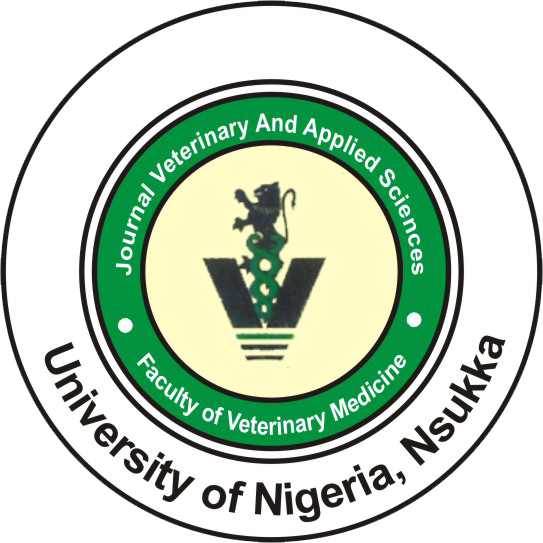University of Nigeria
ISSN: 2315 - 6856
e-ISSN: 2636 - 5553
Journal volumes
Powered by: RockSystems Global Services Ltd.
rocksystemsglobal@gmail.com (+2348035271306)
www.rocksystemsglobal.com
Volume 14, Issue 1: 2024 - Article 134
Abstract
This study investigated the effects of dietary ascorbic acid (AA) and betaine (BET) on the serum levels of oxidative stress markers and some geometric properties of eggs laid by Japanese quail hens during the dry season. A total of 252 quail hens were used for the study. After seven days of acclimatization, the quail hens were randomly assigned to four groups of 63 per group. The four groups and their specific diets were as follows: Untreated Control, fed basal diet with no AA or BET; AA group, fed diet containing 200 mg/kg AA; BET group, fed diet containing 2 g/kg BET; AA + BET group, fed diets containing 200 mg/kg AA + 2 g/kg BET. The study was done at the peak of dry season, between January and March, and the quails were fed for 28 days. The dry-bulb temperature (DBT), relative humidity (RH), and temperature-humidity index (THI) were measured daily at 08:00 h, 13:00 h, and 17:00 h. Malondialdehyde (MDA), catalase, and reduced glutathione (rGSH) levels were assayed in serum obtained from blood samples collected from the quails on days 49 and 70 of age. The egg surface area (SA), volume, geometric mean diameter GMD), sphericity and shell index (SI) were measured on days 49, 56, 63, and 70 of age. Results showed that there were significant (p < 0.05) fluctuations in DBT, RH, and THI, which exceeded the recommended thermoneutral zone for Japanese quails. The AA, BET and AA + BET groups had significantly (p < 0.05) lower serum MDA levels when compared to the untreated control on days 49 and 70, but the serum levels of catalase and rGSH of the AA, BET and AA + BET groups were significantly (p < 0.05) higher than that of the untreated control on days 49 and 70. Eggs from the three treated groups (AA, BET and AA + BET) had significantly (p < 0.05) higher SA, volume, GMD, and sphericity on days 49, 56 and 70, when compared to eggs from the untreated control. It was concluded that dietary AA and BET given alone or in combination positively modulated serum levels of oxidative stress markers and significantly improved egg quality indices of the Japanese quails.
Keywords: Japanese quails; Dry season; Dietary supplementation; Ascorbic acid; Betaine; Oxidative stress; Egg quality.
How to cite this article:
Egbuniwe IC and Oguejiofor CF (2024). Effects of dietary ascorbic acid and betaine on the serum levels of oxidative stress markers and some geometric properties of eggs laid by Japanese quail hens during the dry season. Journal of Veterinary and Applied Sciences, 14(1): 418 – 432.
*Correspondence: E-mail: ifeanyi.egbuniwe@uniben.edu.ng Phone: +2348065308

Effects of dietary ascorbic acid and betaine on the serum levels of oxidative stress markers and some geometric properties of eggs laid by Japanese quail hens during the dry season
Ifeanyichukwu C. Egbuniwe 1 * and Chike F. Oguejiofor 2
1 Department of Veterinary Physiology and Biochemistry, Faculty of Veterinary Medicine, University of Benin, Benin City, Nigeria.
2 Department of Veterinary Obstetrics and Reproductive Diseases, Faculty of Veterinary Medicine, University of Nigeria, Nsukka, Nigeria.
Download .pdf copy here >>






